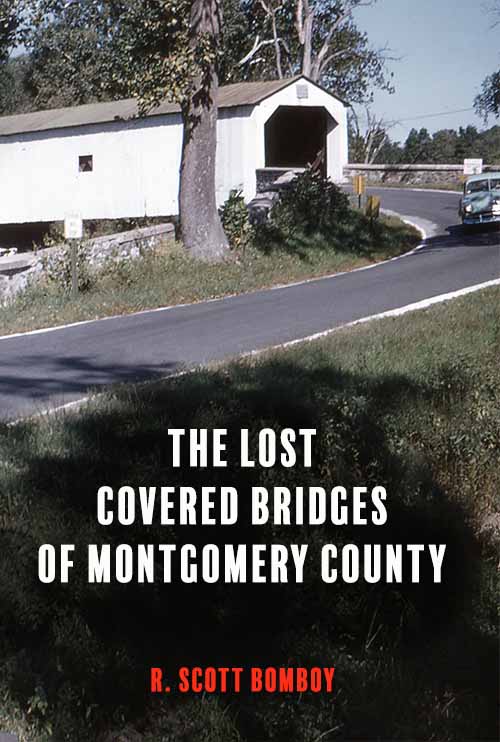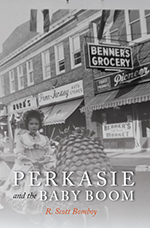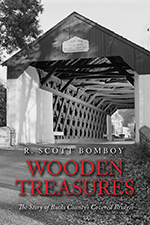On August 30, 1963, Pennridge graduate Sara Ann Baker became the subject of national news coverage when Sara and her husband bought a row home near Philadelphia’s airport. Today, few people may know about her experiences over a nearly three-year period in Folcroft, Pa. The Folcroft riots of 1963 along with the 1957 Levittown riots were milestone events in the battle over housing integration in suburban Philadelphia.
The Folcroft situation started in late August 1963 when rumors started that a Black family bought a row home in Delmar Village, one of Folcroft’s working-class all-white neighborhoods. Eventually, about 1,500 people showed up in Delmar Village to force the Bakers out of the area. They were met by state police, local clergy, and NAACP representatives. The riots ended after two days, but Sara and her husband, Horace Baker, were harassed on a regular basis until they moved to West Mount Airy in 1966.
Sara Ann Webb grew up on Forrest Road in West Rockhill Township. Her father, Edward Webb, owned a refuse and hauling business. Sara joined the 4-H club in Tylersport and took part in the American Legion’s annual patriotic poster contest. She also was a member of the Pennridge girl’s baseball team. Her 1955 yearbook photo noted that “Webbie” was quiet, a good student, and a talented artist. On June 1, 1955, Sara was one of 129 students in the first class to graduate at the new Pennridge building.
Four years later, Sara Ann Webb had graduated from Gwynedd Mercy’s nursing program, and she then completed her studies at Temple University. Webb married Horace Baker, a medical lab technician who had moved from Florida to Philadelphia, and Sara Baker was working as a nurse at the hospital of the University of Pennsylvania. By 1963, Horace and Sara Baker, and their young daughter Terri, were looking to move out of Philadelphia. A Quaker agency, Suburban Fair Housing Inc., had bought the Folcroft row home after a VA loan default, and it was willing to sell the property to the Bakers. By their own account, the Bakers were unaware of the reception waiting for them as a Black family in Folcroft, which is in Delaware County just south of the airport.
On August 28, 1963, Martin Luther King Jr. spoke at a large civil rights rally in Washington, where he gave his landmark “I Have A Dream” speech. The next day, the Bakers were greeted by 250 Delmar Village residents, who blocked the Bakers from their home. The crowd threw rocks at the house, breaking its windows. Most of the rock throwers were children.
The riot started on August 30, 1963, when at least 1,200 people appeared at the Baker’s home. Local newspaper, television and radio reporters were at the scene. The Delaware County Times described the chaos. Many of the rioters were teenagers. The state sent 80 troopers to the location to control the crowd. The mob threw objects at the Bakers, police and the clergy. Late that night, more state police troopers arrived as reinforcements.
Years later, William Goolsby, a Black realtor and NAACP member, described the scene to an Inquirer reporter. “Little kids were cursing you; it was just a mob scene. It was the worst thing I had ever seen in my life.”
On August 31, the group of 100 state troopers was able to push the crowd away from the house, averting thrown objects such as rocks and toys. They also arrested seven protesters. At 4 p.m. the Bakers walked into their new home. That night, the final confrontation between the mob and the state police started when the crowd threw fireworks at the officers, who moved into the mob using riot sticks. The mob also pelted local clergy members with eggs and threatened news photographers.
The Perkasie News-Herald interviewed Edward Webb just after the Bakers had gained control of their house in Folcroft. Webb said he drove to Folcroft to help his daughter, but state police troopers asked him to stay away from the riot scene. The newspaper noted that Sara Webb Baker was well-known to Pennridge-area residents.
“You can’t believe something like that can happen in America,” Webb told the News-Herald. “Folks up here (the Pennridge area) would never treat people like that.” He also credited the Pennridge school system for his daughter’s academic success.
The Inquirer interviewed the Bakers in 1973 after they left Folcroft in 1966. They called the experience in Folcroft a “living nightmare” and explained they took a loss on their rowhome when no one would buy the property. The Inquirer also interviewed Folcroft residents, who were convinced the NAACP had selected the family as “block busters” who would lower housing prices in Delmar Village. Sara Baker denied those allegations in 1963 and again in 1973. “We were just an average couple looking for decent housing.”
In 1979, Sara spoke with the Wilmington Morning News about her time in Folcroft. By then, Horace and Sara had been divorced for five years. “That was a very frightening experience for a newlywed in my first home,” Baker told the newspaper. “I am still bearing the scars of that situation. You just don’t erase that.”
A Philadelphia Inquirer story in 2013 looked back at the Folcroft riots after their 50th anniversary. The Inquirer reported that relatives said Sara rarely talked about her time in Folcroft. Her son found out about the incident when he came across a box of newspaper clippings in the family’s West Mount Airy attic.
Sara’s friend, Judy Meisel, said Sara Baker wanted to raise her children in a peaceful, integrated community, and to move beyond Folcroft. Meisel met Sara in 1963. Meisel, then Judy Cohen, saw the news reports and went from West Mount Airy to Folcroft to give the Baker family some cookies and encouragement. Judy Cohen told Sara that her own family had lost 46 members in the Holocaust.
The Inquirer also noted that Sara had passed away in 2000. Horace Baker died earlier this year.










